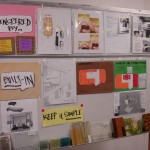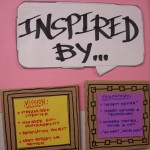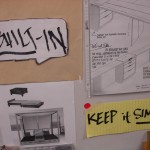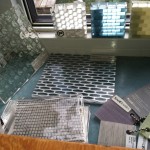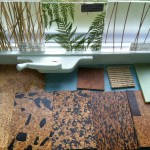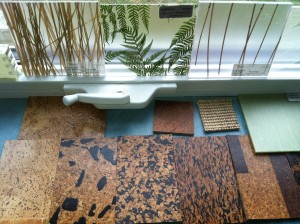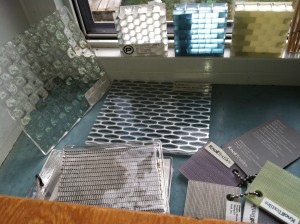November, 2011.
The Less is More class at Yestermorrow ended with a nearly all-night studio session that left me pretty exhausted. But when the time came to present our final projects, I couldn’t help but be fascinated by the imaginative solutions that my classmates had come up with for their small house projects.
My own presentation looked like this:
If you zoom into the pictures a little bit, you can see that a lot of the work was in imagining a gutted trailer where I’d be able to include built-in cabinetry & other furniture. I spent a lot of my time finding examples of built-ins that would suit such a small space, while serving multiple functions. One was for a counter top with stools that folds like a scissor to create a dining table. The stools would double as small storage compartments. Another idea was for a seating / sleeping platform with Japanese-style storage compartments underneath, and a short table that folds up in the middle. A third item (that you can see from one of the pictures) was a table I found online that folds out into a bed and hides a mattress in the center.
I don’t yet know how many of these aspects will end up as part of the final product, but it was very instructive to do this exercise in going from the brainstorming stage into the more structured design process. It was vital during this stage (for example) to make sure that the built-ins would fit and make for a comfortable living & working space. What was really helpful was to use a reference book on architectural graphic standards to determine general measurements for ergonomic comfort. It was also useful to practice drafting skills and pick up a little bit about how to use Google Sketchup in order to understand spacial relationships more accurately.
Although we only had a few days for this design process, I also wanted to anticipate the final product a bit in terms of the interior finish materials. The materials I had at hand to choose from were samples from the Yestermorrow archives that – for presentation purposes – I trusted had primarily sustainable characteristics. These were products like cork or bamboo. Others I chose more for their aesthetic qualities. My goal, considering that the Airstream is primarily used for woodsy, sporty, outdoor activities, but also with Christopher Deam’s design inspiration of producing “an interior that delivered on the modern promise of the exterior,” was to find materials that could marry the two.
When the time came to present my project the following morning, I spoke about my wish to travel cross-country, to lighten my load before I left, to have my own space to call “home” (that wasn’t a rental), and to learn some basic green building & design skills along the way. I wondered aloud what it might be like to re-imagine the interior of the Airstream (an American icon) to reflect not only green or modern design ideas, but also the influences of different ethnic groups that make up the culture of the United States. “What might a Japanese-American Airstream look like? Or a Mexican-American one?”
In the end I receive a lot of positive & constructive feedback from my classmates and instructors:
Final project critique notes:
“The greenest house is the one that requires the least energy to run.”
“In smaller spaces, think about storage, modular furniture & extras (chairs, guest linens, garden supplies, washer / dryer)”
Know the traditional building vernacular. What design elements specifically make a place feel like a home for you?
SUGGESTIONS:
Make a model at a 1” : 1’ scale to explore details
Tape out the floor to see what it feels like; move elements around.
Look at boat design
Think about a table or booth that transforms into a bed?
Consider outdoor space. How do you spread out when you land somewhere?
Energy: Electric? PV? Batteries? See book: “How to Run Your House off of Your Car”
Google “cube house.” Walk-through on YouTube.
Teardrop Trailers – look at kitchen design
How can you stack functions in a vertical fashion? Work / draw in sections to view (i.e., “lost” space above a bed?
Comment:
“Your interior version of America as you travel across & discover America – BEAUTIFUL.”
“…an ideal Yestermorrow project.”
The last comments were made by panel judges that had come in especially to comment on our final projects, and I carry them with me for inspiration as I continue to move forward with this final practicum project!

